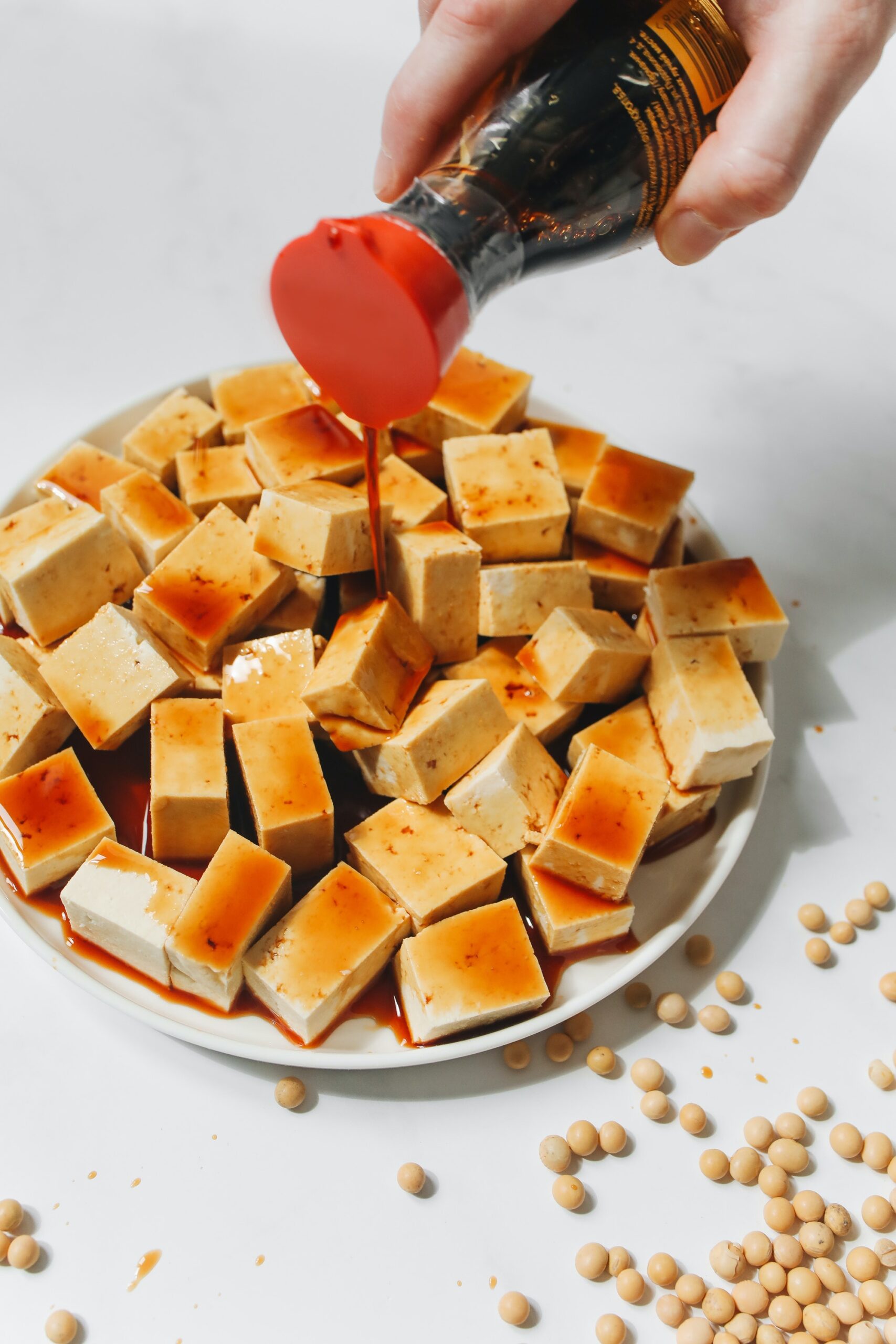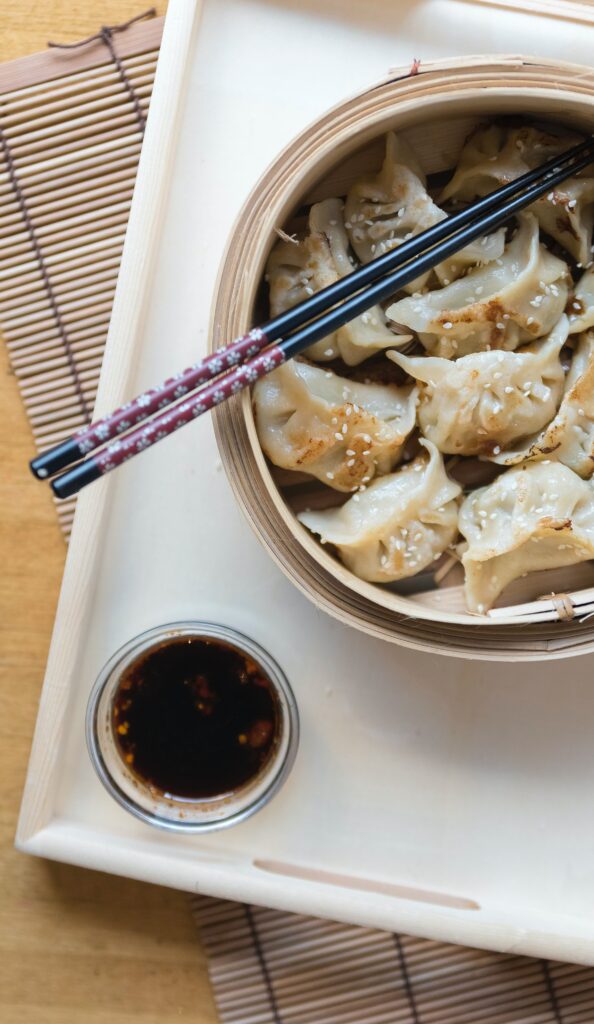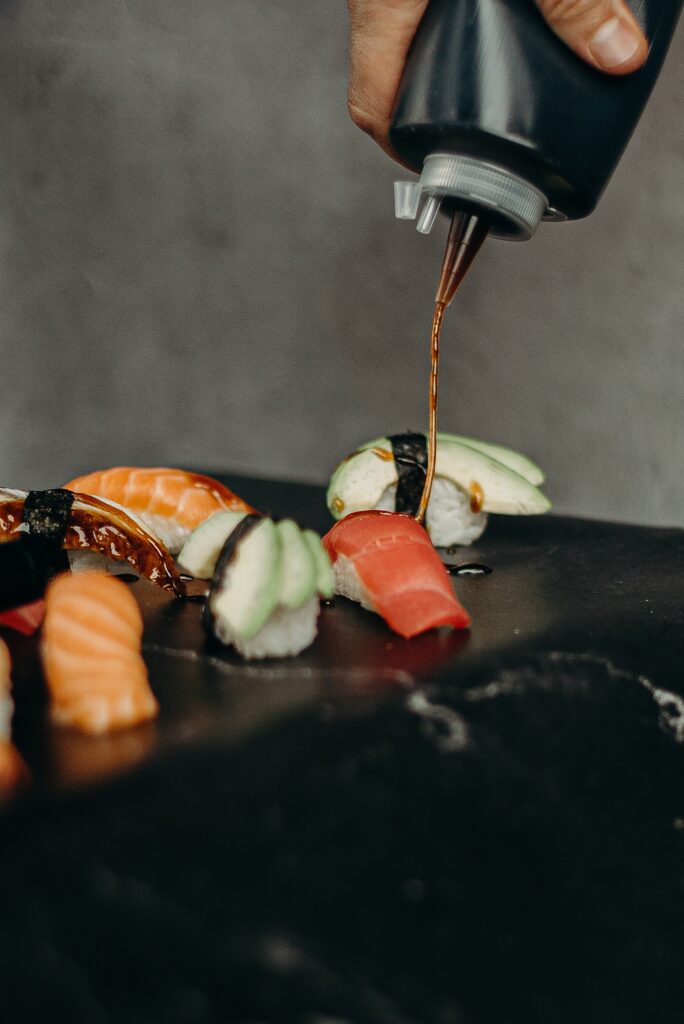
Dark soy sauce is a key ingredient in many Asian cuisines, renowned for its rich color, deep flavor, and savory taste. However, there may be instances when you find yourself in need of a substitute for dark soy sauce. Whether you’re looking for a lighter option or dealing with dietary restrictions, this article will guide you through a variety of the best dark soy sauce substitutes that can elevate your dishes and satisfy your taste buds. So let’s get into the best substitutes.
Follow me on Instagram (@may.eighty.five) for more easy everyday recipes and kitchen tips. I can’t wait to connect with you!
Dark Soy Sauce: What is it
Dark soy sauce is a type of soy sauce commonly used in Asian cuisine, particularly in Chinese cooking. It is made from soy beans, wheat, water, and salt, and undergoes a fermentation process to develop its distinct flavor and dark color. Dark soy sauce is aged for a longer period compared to other types of soy sauce, resulting in a thicker consistency and a deeper, richer flavor profile.

What Does Dark Soy Sauce Taste Like
Dark soy sauce has a distinct taste that sets it apart from other varieties of chinese soy sauce. It offers a complex and robust flavor profile with a combination of a salty taste, savory, and slightly sweet notes and sweet taste. Here are some key characteristics of the taste of dark soy sauce:
Tasting Notes of Dark Soy Sauce
- Rich and Deep: Dark soy sauce has a deeper and more intense flavor compared to light soy sauce. It adds depth and complexity to dishes, enhancing the overall taste experience.
- Umami: Dark soy sauce is known for its strong umami flavor. Umami is often described as a savory, meaty, or brothy taste that adds a satisfying richness to dishes.
- Malty Sweetness: Dark soy sauce has a subtle sweetness with hints of molasses or caramel. This sweetness adds a touch of complexity and tangy flavor to the overall flavor profile.
- Less Salty: While soy sauce, in general, is salty, dark soy sauce tends to be less salty than light soy sauce. The reduced saltiness allows other flavors in the dish to shine through.
- Earthy and Nutty: Dark soy sauce can have earthy and nutty undertones, which contribute to its overall flavor profile. These notes add depth and warmth to the taste experience.
- Balanced Bitterness: Dark soy sauce may have a slight bitterness that balances out the sweetness and saltiness. This bitterness is often subtle and contributes to the complexity of the flavor.
Dark Soy Sauce vs Light Soy Sauce
The main difference between dark soy sauce and other varieties commonly found at Asian markets, such as light soy sauce or sweet soy sauce, is the addition of caramel or molasses during the brewing process. This gives dark soy sauce its characteristic dark brown or almost black color, as well as a slightly sweet and malty taste. The extended fermentation and caramelization contribute to a more robust and complex flavor, with notes of soy, earthiness, and umami.
How is Dark Soy Sauce Used?
Dark soy sauce is commonly used as a seasoning and condiment in a wide range of dishes, including stir-fries, braises, marinades, and sauces. Its rich flavor adds depth and complexity to savory dishes, and its dark color helps to enhance the appearance of the final dish. Dark soy sauce is often used in combination with light soy sauce to balance the flavors in a dish, with dark soy sauce providing the desired color and depth, while light soy sauce adds saltiness and brightness.
Dark Soy Sauce: Nutritional Value
The nutritional value of dark soy sauce can vary slightly depending on the brand and specific ingredients used in its production. However, here is a general overview of the nutritional composition of dark soy sauce based on a typical serving size of 1 tablespoon of dark soy sauce (15ml):
- Calories: Approximately 15-20 calories
- Total Fat: Less than 1 gram
- Sodium: Around 800-1000 milligrams (may vary depending on the brand)
- Total Carbohydrates: 1-2 grams
- Protein: 1-2 grams
It’s important to note that dark soy sauce is relatively high in sodium, which contributes to its rich flavor. Therefore, individuals who need to monitor their sodium intake, such as those with high blood pressure or certain health conditions, should be mindful of their consumption.
What are the health benefits of dark soy sauce
Dark soy sauce also contains small amounts of vitamins and minerals, including iron, potassium, and some B vitamins. However, the quantities of these nutrients are generally minimal and not significant in terms of meeting daily dietary needs or having any real health benefits.

Top Substitutes for Dark Soy Sauce
Light Soy Sauce
Light soy sauce, also known as “shoyu,” is a good dark soy sauce substitute. It offers a similar rich umami flavor but with a lighter color and less intense taste. With it’s similar flavor, light soy sauce is commonly used in stir-fries, fried rice, marinades, and dipping sauces. It adds a salty kick to your dishes without overwhelming other flavors. Consider using it as a 1:1 substitute for dark soy sauce in recipes.
Mushroom Flavored Soy Sauce
If you’re searching for a vegetarian or vegan substitute to traditional soy sauce, mushroom-flavored soy sauce is a great alternative. Made from fermented mushrooms and soybeans, this sauce provides a similar earthy taste and dark color to dark soy sauce. It works well in stir-fries, fried rice, and sauces, delivering depth and complexity to your dishes.
Double Black Soy Sauce
Double black soy sauce is a bolder and thick soy sauce version of regular soy sauce. It offers a more intense flavor and darker color, making it a an excellent substitute for dark soy sauce. Use it sparingly as a little goes a long way. Double black soy sauce is particularly suitable for braising, glazes, and adding depth to stews and sauces.
Oyster Sauce:
A staple in Chinese cuisine, oyster sauce is a thick, savory condiment made from oyster extract, soy sauce, and other seasonings. While it doesn’t have a similar flavor to dark soy sauce, it adds a unique umami flavor and a touch of sweetness to your dishes. Oyster sauce is a good replacement that works well in a stir fry, sea food dishes, marinades, and as a dipping sauce.
Teriyaki Sauce
Teriyaki sauce offers a sweet and savory flavor profile that can be a delightful alternative to dark soy sauce. It combines soy sauce, sugar, ginger, and other ingredients to create a sticky glaze or marinade. Teriyaki sauce is a great choice for grilled meats, stir-fries, noodle dishes and as a dipping sauce for sushi or spring rolls.
Hoisin Sauce
Hoisin sauce is a thick, sweet, and salty condiment made from soybeans, garlic, vinegar, and various spices. Although it has a different flavor profile than dark soy sauce, hoisin sauce adds depth and complexity to dishes. It works well as a marinade, glaze, or dipping sauce, particularly in dishes like Peking duck, spring rolls, and stir-fries.
Worcestershire Sauce
Worcestershire sauce, although not an exact substitute, can add a tangy and savory element to your dishes. It is made from fermented anchovies, vinegar, molasses, and spices. While Worcestershire sauce does not possess the same soy sauce flavor, it can be used in small amounts to enhance the umami taste in meat-based dishes, soups, and stews.
Coconut Aminos
For those following a gluten-free or soy-free diet, coconut aminos is a great option. Made from coconut tree sap and sea salt, it has a slightly sweeter taste compared to soy sauce. Coconut aminos can be used as a 1:1 substitute for dark soy sauce in most recipes. It works well in stir-fries, marinades, and as a dipping sauce.
Other Options to Consider
If you don’t have any of the best options mentioned above or can’t find them at your local grocery store, these are other options to consider:
- fish sauce
- balsamic vinegar
- normal soy sauce
- tamari sauce

DIY Dark Soy Sauce Recipe
Making your own dark soy sauce at home can be a fun and rewarding culinary project. While it may not be an exact replica of commercially produced dark soy sauce, this DIY version can still provide a similar depth of flavor and rich color. Here’s a simple recipe to try:
Ingredients for Homemade Dark Soy Sauce
Makes 1 cup of dark soy sauce
- 1 cup soy sauce (regular or light soy sauce)
- 1/4 cup molasses
- 1 tablespoon dark brown sugar
- 1/4 teaspoon salt
- 1/4 teaspoon Chinese five-spice powder (optional)
How to Make Homemade Dark Soy Sauce
- In a saucepan, combine the soy sauce, molasses, dark brown sugar, salt, and Chinese five-spice powder (if using).
- Place the saucepan over high heat and bring the mixture to a simmer, then reduce to medium heat.
- Stir well to dissolve the sugar and salt, ensuring that the ingredients are fully combined.
- Reduce the heat to low and let the sauce simmer gently for about 10-15 minutes, allowing the flavors to meld together.
- After simmering, remove the saucepan from the heat and let the mixture cool to room temperature.
- Once cooled, strain the sauce through a fine-mesh sieve or cheesecloth to remove any impurities or solids.
- Transfer the homemade dark soy sauce to a clean and sterilized bottle or jar.
- Store it in the refrigerator for at least a week to allow the flavors to further develop and meld together.
Important Note on Homemade Dark Soy Sauce
The homemade dark soy sauce may not have the exact same flavor intensity and complexity as commercially produced versions, as the fermentation process in commercial production is more complex and lengthy. However, this DIY version can still provide a satisfactory substitute for many dishes.
Popular Recipes That Call for Dark Soy Sauce
Dark soy sauce is a staple ingredient in many popular recipes, especially in Asian cuisines. It adds depth, color, and a rich flavor to a wide variety of dishes.
Here are some popular recipes that often call for dark soy sauce
- Beef and Broccoli Stir-Fry: Dark soy sauce is commonly used in beef and broccoli stir-fry to create a glossy, flavorful sauce that coats the beef and vegetables. Its robust flavor pairs well with the tender beef and the vibrant broccoli.
- Char Siu (Chinese BBQ Pork): Dark soy sauce is a key component in the marinade for char siu, a popular Chinese BBQ pork dish. It adds a deep color and imparts a savory-sweet flavor to the succulent pork.
- Braised Soy Sauce Chicken: Dark soy sauce is an essential ingredient in braised soy sauce chicken, a classic Chinese dish. It provides a rich, caramelized sauce that coats the tender chicken pieces, resulting in a flavorful and comforting dish.
- Mapo Tofu: Mapo Tofu is a Sichuanese dish featuring soft tofu and a spicy, savory sauce. Dark soy sauce is often used in the sauce to lend depth and umami to the dish, balancing the spice and heat from the other ingredients.
- Soy Sauce Eggs (Marbled Tea Eggs): Soy sauce eggs are a popular snack or side dish in many Asian countries. Dark soy sauce is used in the marinade to create the signature marbled pattern on the boiled eggs and infuse them with a savory flavor.
- Lo Mein: Dark soy sauce is often included in the sauce for lo mein, a popular Chinese stir-fried noodle dish. It adds color and richness to the noodles, enhancing the overall taste of the dish.
- Chinese-Style Spare Ribs: Dark soy sauce is frequently used in marinades for Chinese-style spare ribs. It helps create a caramelized glaze on the ribs, providing a sweet, sticky, and savory coating.
These are just a few examples of popular recipes that often call for dark soy sauce. Its unique flavor and color make it a versatile ingredient in a wide range of Asian dishes, adding depth and enhancing the overall taste.
Conclusion
While dark soy sauce is undoubtedly a flavorful and essential ingredient, these substitutes provide a range of options for various dietary needs or when you simply want to try something different. Light soy sauce, mushroom-flavored soy sauce, double black soy sauce, oyster sauce, teriyaki sauce, hoisin sauce, Worcestershire sauce, and coconut aminos all offer unique flavors that can enhance your dishes. Experiment with these substitutes to find the perfect match for your taste preferences and dietary requirements. Remember, a world of flavor awaits beyond dark soy sauce!

Christopher is a food and lifestyle expert, recipe developer and the content creator behind May Eighty Five. With years of experience in the kitchen, he also shares tips, tricks and how to’s that he has learnt over the years. Every week, he shares quick, simple and mostly healthy recipes along with some home and entertaining tips. You will find flavorful cocktails, delicious appetizers, tasty mains and some indulgent desserts. As a home decor enthusiast, he also likes to share simple DIY projects and simple tips for a beautiful home.








